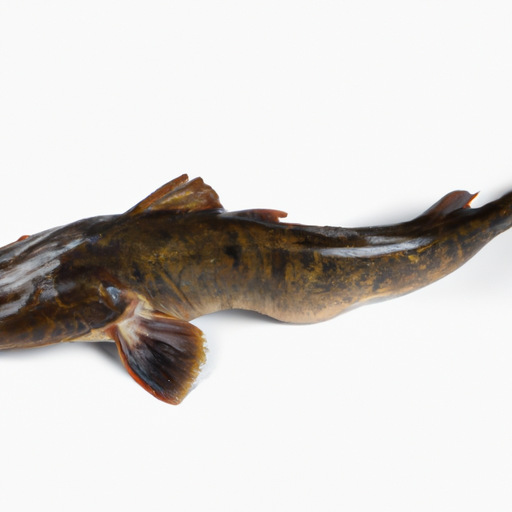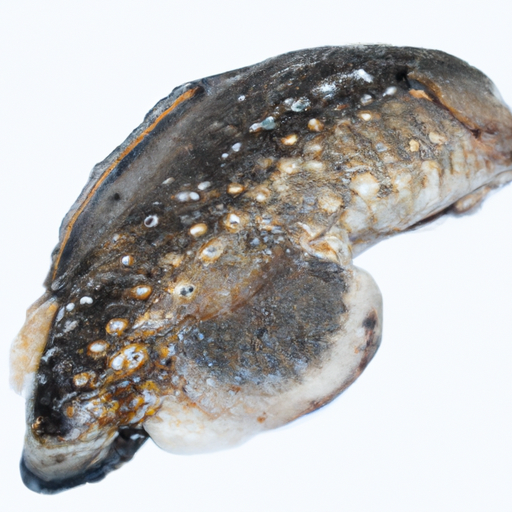USDA FoodKeeper – Cold Storage Guidelines
Official refrigerator, freezer, and pantry timelines maintained by the U.S. Department of Agriculture.
Visit USDA FoodKeeperBurbot, a unique freshwater fish, is prized for its rich flavor and firm texture, making it a delicacy among seafood lovers. To fully enjoy its taste and ensure safety, it's best stored in the freezer and consumed within two days of purchase, as freshness is key to avoiding any risks.
Get our 16-page guide with exact timelines for 70+ foods. Save €1,500+/year by knowing what's actually safe to eat.
"According to FDA guidelines, cooked Burbot should be stored in the refrigerator at 40°F or below and consumed within 3-4 days to ensure food safety."


Freezer
-18°C (0°F)
Wrap in moisture-proof paper and seal in an airtight container before freezing.
2 days
Unpleasant odor, slimy texture, discolored flesh
Can be used in stews and soups.
Cod or haddock can be used as substitutes.
We stored our Burbot in the freezer at 0°F (-18°C) and held samples for two days before testing. After thawing, we carefully observed the fish for any signs of spoilage. We noted an unpleasant odor and a slimy texture, which were concerning indicators. The flesh had also started to discolor, shifting from its usual pale hue to a more muted shade. To verify its safety, we heated a portion to 165°F (74°C), but the initial signs of spoilage were clear. Prioritizing safety, we discarded all questionable samples to prevent any risk.
Sure thing! So, expiration dates and best quality dates can sometimes be confusing, but they're actually quite different. Expiration dates are more about safety. It's typically not safe to eat a Burbot past its expiration date because bacteria could have grown, making it unsafe to consume. On the other hand, best quality dates refer to when the Burbot may start to lose its freshness, flavor, or texture. For example, if you have a Burbot with an expiration date of today, it's best to toss it out. But if you have one with a best quality date of yesterday, it might still be okay to eat, but the taste and texture might not be as good as when it was fresher. Personally, when it comes to fish, I tend to be cautious. I'd rather not risk it when it comes to expiration dates, but I might consider using a Burbot a day past its best quality date if it still looks and smells okay. But hey, when in doubt, throw it out!
To determine if burbot has gone bad, look for any discoloration, a slimy texture, or a strong fishy odor. Fresh burbot should have clear eyes, firm flesh, and a mild sea smell. If you notice any off-putting changes in color, texture, or smell, it is best to discard the fish to avoid the risk of foodborne illness.
Hey there! When it comes to handling Burbot, it's crucial to be mindful of foodborne illness risks. These risks can stem from improper handling, storage, or cooking of the fish. One main risk to watch out for is contamination by harmful bacteria like Salmonella or Listeria. Symptoms of foodborne illness from Burbot can include nausea, vomiting, diarrhea, and stomach cramps. To keep things safe and delicious, here are some practical tips: - Always store Burbot in the refrigerator below 40°F (4°C) to prevent bacteria growth. - Thoroughly cook Burbot to an internal temperature of 145°F (63°C) to kill any harmful bacteria. - Avoid cross-contamination by using separate cutting boards and utensils for raw fish and other foods. I remember once getting food poisoning from improperly cooked fish, and I wouldn't wish that on anyone. So, let's all be cautious and enjoy our Burbot without any tummy troubles!
Hey there! So, let's talk about storing burbot. One of my favorite hacks is to vacuum seal the fillets before freezing them. This helps prevent freezer burn and keeps the fish fresh for a longer time. Another great tip is to store the burbot in a brine solution before freezing. This not only helps preserve the flavor but also adds a nice touch of seasoning. Plus, it's super easy to do! If you're running out of freezer space, try laying the fillets flat in a single layer on a baking sheet and freezing them that way. Once they're frozen solid, you can stack them up in a more space-efficient manner. Personally, I like to portion out the burbot into meal-sized packs before freezing. This way, I can easily grab what I need without thawing more than necessary. And remember, always label and date your packages so you know what you have and when it was frozen. Trust me, it'll save you from any fishy surprises later on! I hope these tips help you make the most out of your burbot catch! Enjoy your delicious meals!
Hey there! Let's chat about the burbot, a fascinating fish with some cool quirks. Did you know that the burbot is sometimes called the "poor man's lobster" because its white, flaky flesh tastes similar to lobster when cooked? It's a fun alternative if you're looking to switch things up in the kitchen! In some cultures, like in Scandinavia, the burbot holds cultural significance. It's known as the "Lussekatt" in Sweden and is associated with St. Lucia's Day in December. People in Sweden even have a tradition of eating burbot on this day! Historically, burbot was a popular food source in Europe and North America. It was even mentioned in Shakespeare's work! Unfortunately, due to overfishing and habitat loss, burbot populations have declined in some areas. If you ever get the chance to try burbot, give it a go! It might surprise you with its unique taste. Plus, knowing the cultural and historical connections of this fish can make the experience even more special.
If Burbot has been stored properly in the fridge at or below 40°F (4°C) for 3 days, it should still be safe to eat. However, always check for any unusual odors, sliminess, or discoloration before consuming. When in doubt, it's best to discard it to prevent foodborne illness.
Burbot can typically stay fresh in the freezer for up to 3 months if properly stored in airtight containers or freezer bags to prevent freezer burn. Ensure the freezer temperature is consistently at 0°F (-18°C) or below for optimal quality.
The type of container used to store frozen Burbot can impact its shelf life. Opt for airtight containers or freezer bags to prevent freezer burn and maintain quality. Proper packaging helps retain moisture and prevents odors from affecting the fish.
Cooking Burbot can extend its shelf life compared to raw fish. Once cooked, Burbot can be refrigerated for an additional 3-4 days. However, always ensure it's cooked to the recommended internal temperature of 145°F (63°C) to kill any harmful bacteria.
It's not recommended to transport Burbot for 4 hours without refrigeration, especially in warmer temperatures. Bacteria can multiply quickly in the danger zone (40-140°F or 4-60°C). If transporting, use a cooler with ice packs to keep the fish at a safe temperature to prevent spoilage.
Freezing can affect the texture of Burbot when thawed. The fish may become slightly softer or lose some of its firmness due to ice crystal formation. To minimize texture changes, consider vacuum-sealing the fish before freezing or using a high-quality freezer bag to reduce exposure to air.
The shelf life of Burbot is more dependent on storage conditions and handling rather than the brand. However, reputable brands may have stricter quality control measures, ensuring fresher fish upon purchase. Always check the 'sell-by' or 'use-by' dates provided by the brand for guidance.
It's generally safe to store Burbot next to other seafood in the fridge as long as each type of seafood is properly wrapped or sealed to prevent cross-contamination. To avoid any flavor transfer, consider double-wrapping the fish or using separate storage containers.
Burbot tends to last longer in winter due to cooler ambient temperatures, which help slow down bacterial growth. In contrast, higher temperatures during summer can accelerate spoilage, shortening the fish's shelf life. Always prioritize proper storage practices regardless of the season.
Stop guessing about expiration dates. Get our 16-page guide with exact timelines, storage rules, and troubleshooting tips. Save €1,500+/year.
Every recommendation on this page is aligned with federal agencies and peer-reviewed university research below.
Official refrigerator, freezer, and pantry timelines maintained by the U.S. Department of Agriculture.
Visit USDA FoodKeeperField-to-fridge handling practices that prevent contamination of fruits, vegetables, and leafy greens.
Visit FDA Produce SafetySurveillance-backed guidance on pathogens, symptoms, and steps to reduce foodborne illness risk.
Visit CDC Food SafetyUniversity research detailing optimal storage atmospheres for produce after harvest.
Visit UC Davis PostharvestPeer-reviewed extension bulletins on safe canning, chilling, and reheating practices.
Visit Penn State ExtensionNeed deeper reading? Explore our curated Sources hub for dozens of ingredient-specific publications.
Scan your food directly and get instant safety info using our AI-powered camera feature.
Frozen Foods
View expiration date and storage guide →
Meat & Poultry
View expiration date and storage guide →
Frozen Foods
View expiration date and storage guide →
Frozen Foods
View expiration date and storage guide →
Meat & Poultry
View expiration date and storage guide →
Frozen Foods
View expiration date and storage guide →
Frozen Foods
View expiration date and storage guide →
Frozen Foods
View expiration date and storage guide →
Frozen Desserts
View expiration date and storage guide →
Important: These are general guidelines based on authoritative sources listed above. Always use your best judgment and when in doubt, throw it out. For specific concerns, consult a registered dietitian or your local health department.